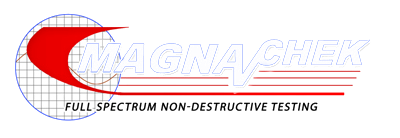The purpose of pressure leak testing is to ensure the safety, reliability and leak tightness. There are two methods for pressure testing: hydrostatic and pneumatic.
A hydrostatic test is performed by using water as the test medium, whereas a pneumatic test uses air, nitrogen, or any non-flammable, non-toxic gas. Pressure tests must always be performed under controlled conditions, following an approved test plan and documented in a test record. A single approved test plan may be used for several similar tests, but a separate test record is required for each test performed.
Hydrostatic Testing Procedure
These tests are conducted under the constraints of the customer’s specifications, or may be required by law. A technician fills the vessel with an incompressible liquid, usually water or oil, and then examines the sample for leaks or permanent changes in its shape. From time to time we add red or fluorescent dyes to the water to make the leaks more visible.
Pneumatic Testing Procedure
This test method involves measuring the change in pressure inside the tubing over time. There are three procedures that may be used, all of which are intended to be equivalent. The test medium normally used for this test is compressed air, or nitrogen if the source is bottled gas. Due to the risk with this testing method Hydrostatic testing is more commonly used. Pneumatic tests may be performed only when pressure systems are so designed that they cannot be filled with water and when pressure systems are to be used in services where traces of the testing medium cannot be tolerated.

